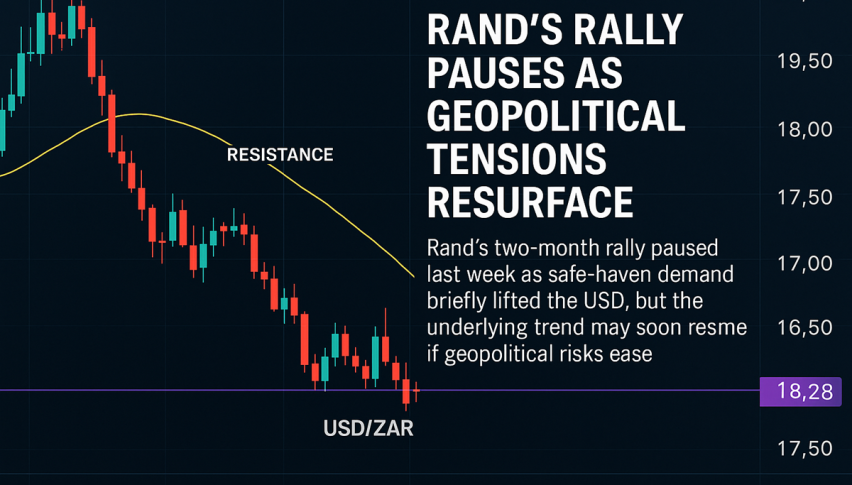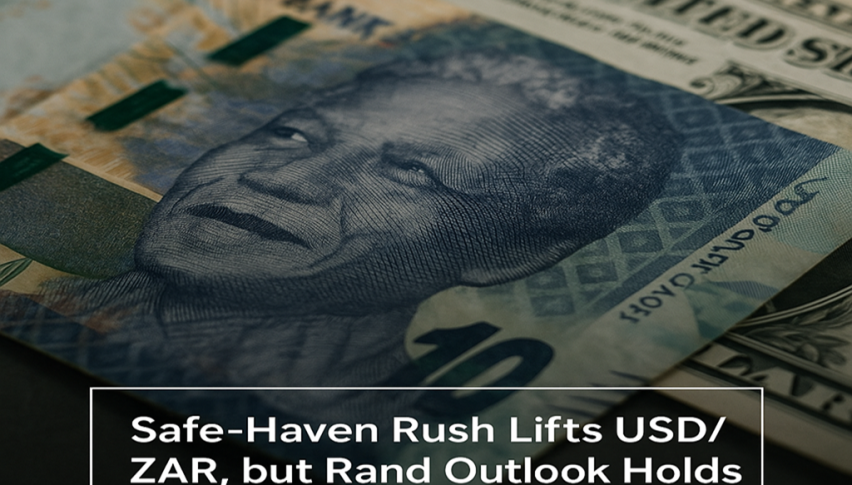USD is an abbreviation for the United States dollar, the official currency of the United States of America. One United States dollar, or US dollar, is divided into 100 cents, or into 1,000 mills for accounting and taxation purposes (symbol: ₥). This currency is typically represented by the symbol $ or US$, in order to differentiate between it and other dollar-based currencies. It is also worth mentioning that the US dollar, often referred to as the greenback, is the most-used currency in activities worldwide. As a result, this currency is considered a benchmark currency. Apart from this, the US dollar is accepted as the official currency in many countries outside of the US.
On the ZAR front, the South African rand (ZAR) is the national currency of South Africa. It is made up of 100 cents and is represented with the symbol R. It is worth mentioning that the name, rand, comes from the word “Witwatersrand” which means “white waters ridge.” Johannesburg, the location of the majority of South Africa’s gold deposits, is situated on this ridge.
From a historical point of view, the South African rand was first launched in February 1961, just before the Republic of South Africa was established. The South African rand replaced the South African pound at a rate of 2 rands to 1 pound. Up until the early 1970s, the South African rand was worth around R 1.5 per USD. However, the rand devalued at a rapid rate during the Great Recession.
What is the USD/ZAR (US Dollar/ South African Rand)?
The USD/ZAR is an exotic pair in forex trading or currency trading, as the rand (ZAR) is an emerging market currency that carries less liquidity than developed market currencies. As we already mentioned, the USD/ZAR is an exotic currency pair, as it carries lower liquidity than most major currencies traded on the market, such as (the US dollar, Swiss franc, euro, British pound, Japanese yen, Canadian dollar and Australian dollar). However, the lower liquidity of the rand offers higher volatility, which offers higher opportunities for rewards (or losses).
Despite this, the South African economy is more developed than a number of its emerging market peers, so that in turn, its liquidity is considered higher than many of its counterparts, and more than sufficient for trading purposes.
Major Factors that Influence the USD/ZAR Currency Pair
The USD/ZAR currency pair is usually affected by factors that impact the values of the US dollar and the South African rand in relation to each other and to other currencies. Therefore, the interest rate differential between the South African Reserve Bank and the Federal Reserve (Fed) will significantly influence the value of these currencies, compared to one another. However, the traders keep an eye on the economic calendars, as high impact news significantly impacts the USD/ZAR currency pair.
When trading the USD/ZAR, traders focus on the high impact of both US and South African economic data points, as the currency pair reflects the two economies. Gross domestic product (GDP), consumer price inflation, trade/current account balance, and unemployment data are considered the key factors that impact the currency pair.
Current USD/ZAR Price: $
Historical Data Tables:
USD/ZAR Historical Price Data
| Date | Price | Open | High | Low | Change % |
|---|
Monthly Change
| Date | Price | Open | High | Low | Change % |
|---|
As we already have mentioned, the USD/ZAR currency pair is normally affected by factors that impact the values of the US dollar and the South African (rand) in relation to one another and to other currencies. Therefore, the interest rate differential between the South African Reserve Bank and the Federal Reserve (Fed) will significantly influence the value of these currencies compared to each other. However, the traders keep an eye on the economic calendars, as high impact news significantly impacts the USD/ZAR currency.
Monetary Policy:
The currencies are most sensitive to monetary policy by central banks. However, the increasing interest rates in an economy tend to underpin the domestic currency. Likewise, lowering of interest rates are expected to undermine a currency.
Economic Data:
The economic data, such as the Consumer Price Index (CPI), Gross Domestic Product (GDP), Trade Balance, Retail Sales, Consumer Price Index and Industrial Price Index have a significant influence on the USD/ZAR prices. This data is essential if one is to understand the stock market and especially the direction of the ZAR.
Supply & Demand:
The Rand, as a currency, is most sensitive to SUPPLY AND DEMAND factors. If South African exports are popular and in high demand, it undermines the Rand as a currency. The strong trade industry is indicative of a well-performing currency. But if there’s plenty of supply and less demand, this can impact negatively on the South African currency (ZAR).
Political Situation:
If your country is in bad hands, or if it has a chaotic government, which makes terrible choices and constantly gets things wrong, this will eventually harm the currency. Failure of the government to effectively manage the country will spook businesses and trading partners, and discourage them from investing, and it can even result in tourists avoiding the country.
Availability Of Money:
The value of a currency can be defined by how many people are using it. If people and businesses worldwide increase their demand for a domestic currency, that will underpin the currency. Having a surplus of available currency has a negative effect, which undermines its value and impacts the exchange rate.
International Relationships:
Relations between countries tend to grow or undermine their economies. They increase the range of consumers reached geographically and demographically through interactions such as imports and exports, but they also allow the other country’s economic fluctuations to affect their economy.


